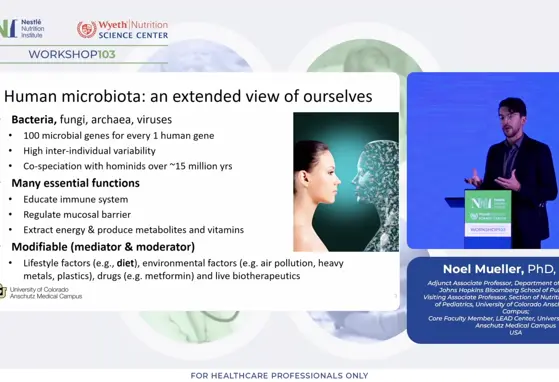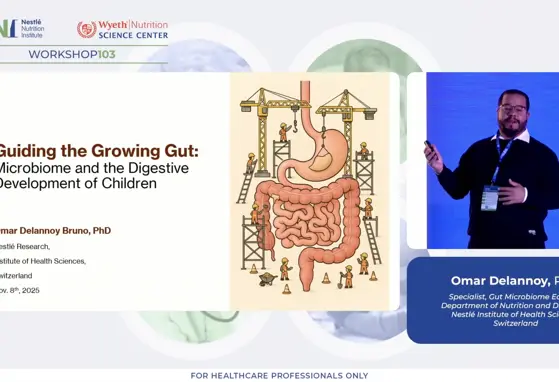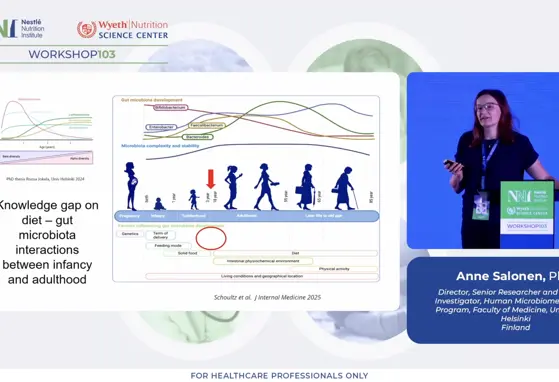Complementary Feeding- Latest insights
2 min read
/
Growth & Development
Gut Microbiota
How important is it for babies to learn how to chew
- A baby who is exposed to texturised foods from 9 months will accept a variety of foods more easily
- Chewing the food exposes more of it to the various digestive enzymes, leading to better absorption
- Creates space in the jaw for the permanent teeth
Evolution of Breastmilk: Energy and Protein
Throughout the lactation period, breastmilk evolves to meet the needs of the growing infants
- During the first four months the energy needs of the infant increases, this leads to a corresponding increase in the volume consumed. After 4 months the volume remains constant
- After the initial spike, the daily caloric needs decreases throughout the 1st year. The average for both boys and girls at 1 month is 110kcal/kg/day at 1 months, and is 80kcal/kg/day at 12 months
- Growth rate and protein intake decreases to half the initial levels from 6 months of life. It is not only intake but also the protein levels in breastmilk that also declines. The ratio of whey: casein moves from 100:0 and reached 50:50 in late lactation
If you liked this post you may also like

Mindful Microbes: The Interplay Between Environment, Gut Microbiome, Brain, and Behavior
Mindful Microbes: The Interplay Between Environment, Gut Microbiome, Brain, and Behavior

Exploring the Crosstalk: Nutrition, Microbiome, and Cardiometabolic Health
Exploring the Crosstalk: Nutrition, Microbiome, and Cardiometabolic Health

Guiding the Growing Gut: Microbiome and the Digestive Development of Children
Guiding the Growing Gut: Microbiome and the Digestive Development of Children

Nourishing the Microbiome at Preschool age: Dietary influences from infancy to present
Nourishing the Microbiome at Preschool age: Dietary influences from infancy to present